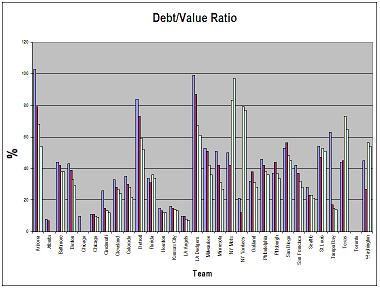I'm not referring to the team's popularity or TV ratings, nor is it an attendance phenomena. Remember this chart?

This year's Fan Cost Index by Team Marketing Report has the A's average ticket price for 2008 at:
$29.20
It's way off the above chart, a whopping 22.3% increase over 2007 ($23.88). That's good enough for third highest in MLB, behind the Yankees and Cubs.
The increase contributed to an overall FCI of $206.80, 11.5% over 2007 and good for 10th in baseball. That's higher than most teams with recently built ballparks, including the Nationals ($195.50), Padres ($201.72), and Giants ($183.74). The Giants actually posted a FCI drop of 0.7% relative to last season - but only because they were allowed to go back and adjust prices after the season was over.
But is $29.20 right? Compared to last year, several seating sections received $4-6 ticket hikes, whereas roughly one-third of the stadium has only a $1 increase. There's premium game pricing for the Yankees, Red Sox, and Giants, but that's only 11 out of 79 games (Tokyo doesn't count). There's also the addition of the all-you-can-eat seats, but even that only equates to a $1-1.50 hit. (I've sent Team Marketing Report a request for clarification but have not received a response.)
If one were to follow simple supply-demand rules, a ticket price hike (whatever the final number) would appear to be a major cause for the significantly reduced attendance this year (see sidebar). Reduced expectations and a revamped roster with few big names haven't helped, neither have the oddly cooler temperatures observed for A's homestands as opposed to Giants' games. Now that the team is leading the division and Frank Thomas has returned, there should be some uptick from the bandwagoners and youth, along with warmer weather. However, I don't think they'll catch last year's total or eclipse 2 million unless they go on a massive winning streak or run away with the division - thoughts that were unheard of in the winter.



